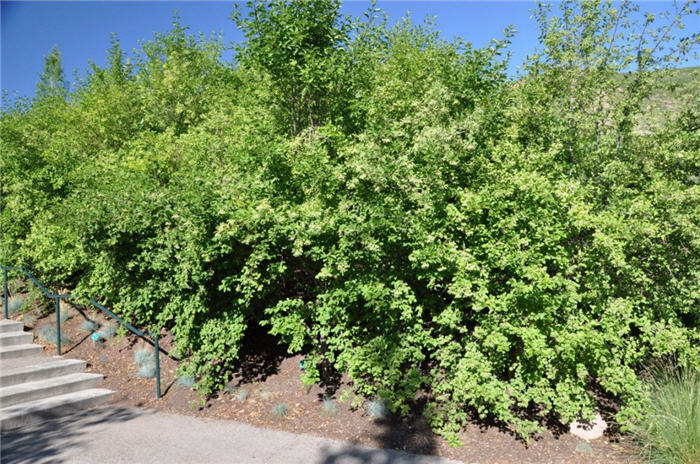| Botanical Name: Viburnum prunifolium | |
| Common Name: Blackhaw Viburnum |

-
Anatomy
-
Culture
-
Design
Plant Type
Shrub
Height Range
6-12', 12-25'
Flower Color
White
Flower Season
Spring
Leaf Color
Green, Red
Bark Color
Brown, Grey
Fruit Color
Black, Pink
Fruit Season
Summer, Fall
Sun
Full, Half
Water
Low, Medium
Growth Rate
Moderate
Soil Type
Sandy, Clay, Loam, Rocky, Unparticular
Soil Condition
Average, Rich, Poor, Well-drained, Dry
Soil pH
Neutral, Basic
Adverse Factors
n/a
Design Styles
Meadow, Ranch, Woodland
Accenting Features
Fall Color, Showy Flowers
Seasonal Interest
Spring, Summer, Fall
Location Uses
Background, Shrub Border, Foundation, Patio, Walls / Fences
Special Uses
Hedge, Screen, Mass Planting
Attracts Wildlife
Birds, Butterflies
Information by: Stephanie Duer
Photographer:
Photographer:
-
Description
-
Notes
Blackhaw is a deciduous viburnum with a rounded, dense crown, and a coarse appearance growing 10 to 15 feet tall and 8 to 12 feet wide. Leaves are ovate and dark green, with a purplish fall color (though it is variable). Flowers are white and appear in flat-topped clusters in May. Fruits ripen to pink than black by fall and are much enjoyed by birds. A tough, durable shrub for mass planting, shrub and foundation borders, screens and hedges.
Grow in well drained soil in full sun to partial shade. Adaptive to a variety of soil types and pH. Shearing is to be discouraged; prune selectively as necessary to control size, though ideally it is left alone. Not readily available here, but it is a good, sturdy shrub and worth looking for and planting.